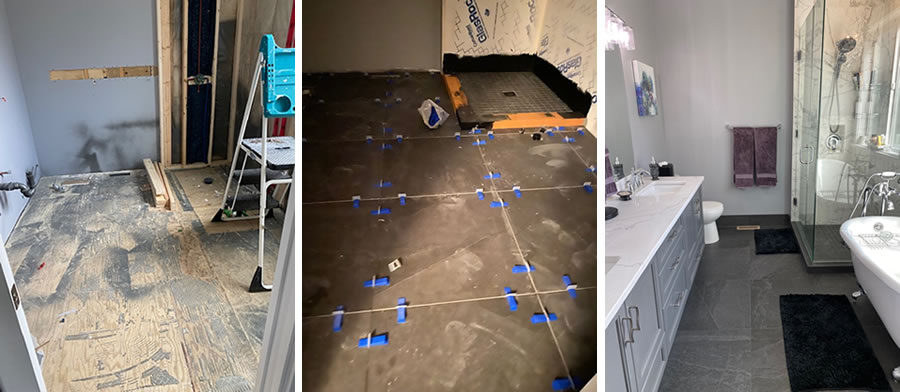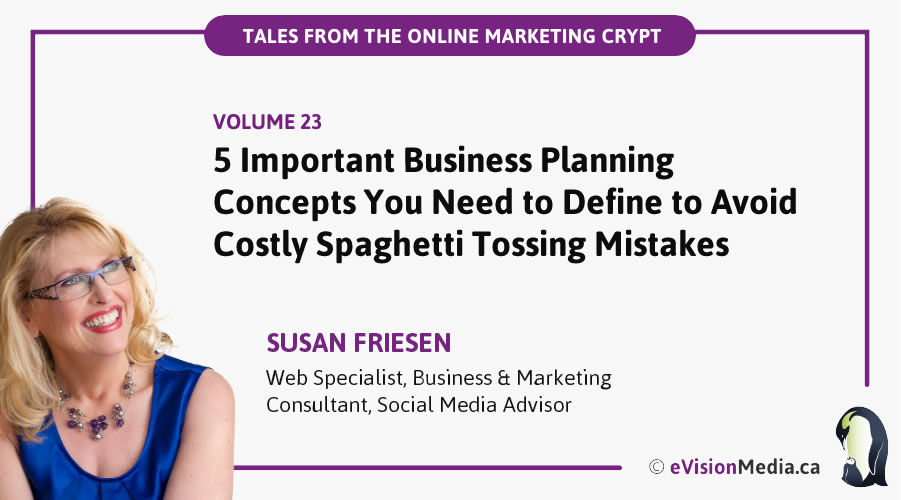Tales from the Online Marketing Crypt #23
In my previous Tales article, I wrote about the frustration I went through when wanting to do some renovations to our home before moving in this past fall. The resilience-testing story of the original contractor was only one part of my frustrations, though!
Over the six months it took to get the changes made to our home, there were plenty of lessons to be learned and one of them was why you should always have a plan.
Our original contractor was supposed to be the one who would come up with the plan on what needed to be done, how it would be done, by whom, and when. At least that’s what I assumed would happen!
But when he ghosted us, we had to quickly change directions and, in our haste to forge ahead, the detailed planning took a back seat.
As you may already know, I’m a stickler for strategy and planning.
Without proper planning, most anything we do, whether it’s in business or in our personal lives, is akin to throwing spaghetti on the wall and hoping something sticks.
When it came to renovating our bathroom, there was a lot of spaghetti slinging and luckily, much of it did stick…eventually.
When I reference spaghetti in this context, think of each strand of spaghetti being a contractor in some capacity – whether it be the drywaller, painter, tile installer, plumber, electrician, and everyone in between, they all had a role to play in creating the end result.
Only they didn’t have a plan to follow.
They were given oral guidance as to what the vision was and provided with the colours and materials needed, but there was no blueprint for them to follow.
I knew this because of the types of questions I was being asked, such as, “What do you want the niche dimensions to be?”, “Is the tile going all the way to the ceiling or just part way up?”, or “Where is the drain going for the shower?”
If a plan was in place, that would have all been detailed as part of the project deliverables, making it easy for each contractor to know what they needed to do to ensure the stage was set properly for the next person to do their thing.
Thus, a few strands of spaghetti slid down the wall and had to be tossed back up. And by that I mean incorrect assumptions were made, and the work had to be fixed before the next contractor was able to do their job.
Of course, each error caused a domino effect delay that resulted in not only costly overruns, but the project taking much longer to complete, as well.

I see a similar scenario happen all too often in business, too.
This is especially true when it comes to brand-new entrepreneurs who are venturing into unknown territory and quite literally slinging spaghetti on a wall because they don’t even know what a plan should look like, let alone how to create one.
For example, this tends to happen when logos are designed before doing a proper brand analysis.
Or when a website is built before understanding the appropriate brand positioning or defining a target market.
Or while randomly posting on social media with the hope and prayer that someone will pay attention.
Or when creating fancy programs without doing the market research first to see if anyone will even purchase them.
There are plenty of examples of this kind of thing that can result in a lot of wasted time, energy and money, not to mention experiencing a lot of frustration and letdown when nothing seems to be working, despite all of the efforts.
Enter The Hero: A Plan
This is the point where I might lose you. But don’t hit that back button just yet – hang in a bit longer, please.
Trust me, I know. Like many of you, there are times when I’d rather scratch my nails on a chalkboard than have to sit down and write out a business and/or marketing plan!
But the good news is, it doesn’t need to be elaborate.
However, you do need to know some of the fundamentals before jumping into your new venture.
This includes things like:
- Your business offerings, goals, and objectives
- Your brand positioning and what group(s) of people would most resonate with you and your offerings
- How you’re going to find those people and get in front of them, so they know you’re the perfect solution they’ve been looking for
- How you’re going to stay relevant and become a leader in your industry
- Recognizing that you can’t do everything yourself, and understanding what kinds of people you need on your team to help offset your own weaknesses
Being a business owner comes with the responsibility of creating a plan so both you and the people you bring on board know what needs to be done to fulfil your goals and objectives.
So stop throwing spaghetti on the wall and be more strategic with your business.
Even if you’ve been in business for a few years now, it’s never too late to sit down and write out your plan.
If you need help, don’t hesitate to reach out and schedule a 30-minute free consultation with me to get you started on the path of clarity so your business can thrive.
To your business success,
Susan Friesen
P.S. If you liked the article, you might want to subscribe to our newsletter. We publish tons of valuable content to help you learn more about marketing, and subscribing is the best way to ensure you don’t miss out. Additionally, if you’d like to learn more about creating a successful and profitable website, while avoiding costly mistakes, click here for our free report on the 6 Critical Steps to Creating a Successful and Profitable Website.
RECOMMENDED RESOURCES:
- WATCH: Why You Need a Business Plan Roadmap. An interview with business coach, Mark Johnson.
- WATCH: Why Business Plans are a Must-Have an interview with Strategic Business Advisor and Planner, Pamala Chatry.
- WATCH: Simplifying & Demystifying the Business Plan an interview with Strategic Business Advisor and Planner, Pamala Chatry.







